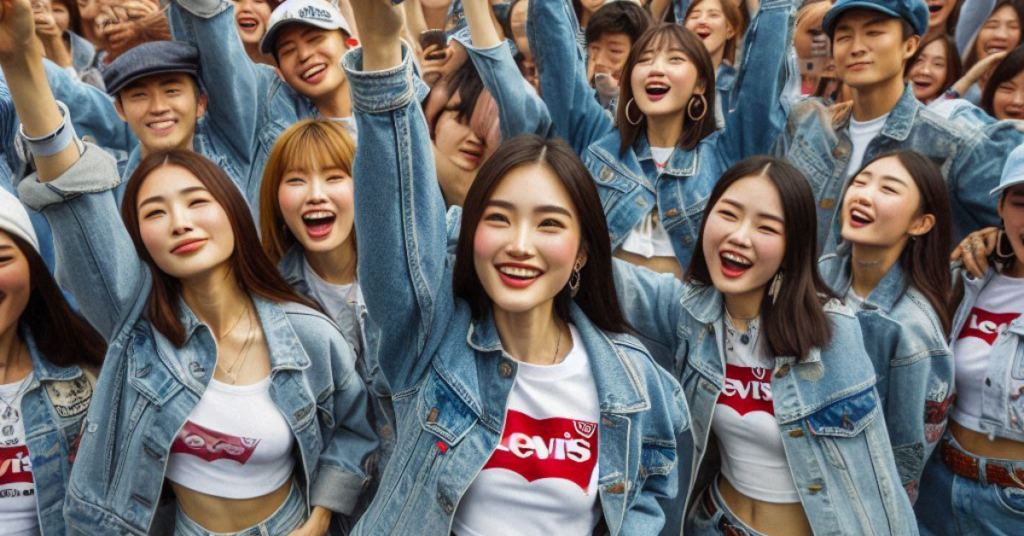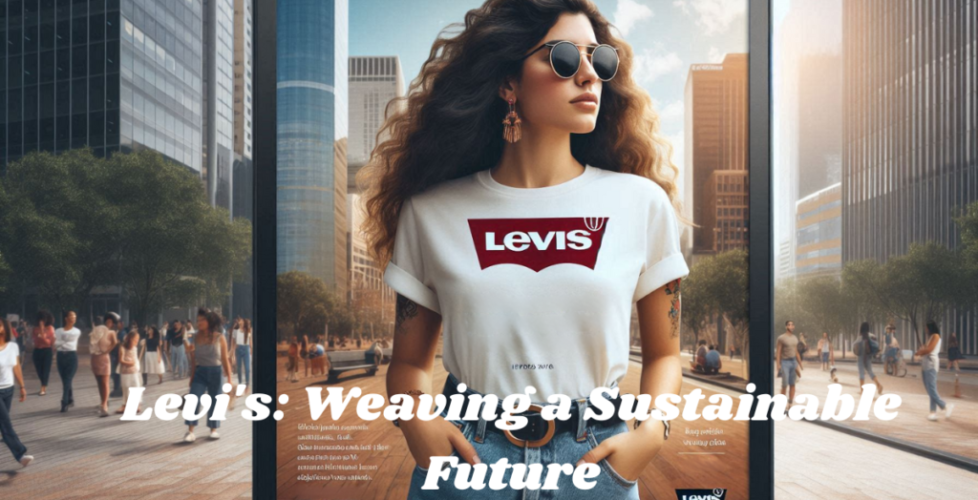Levi’s: Weaving a Sustainable Future
Levi Strauss & Co. is known globally as Levi’s. It’s more than a clothing company—it’s a cultural touchstone. Levi’s had humble beginnings during the California Gold Rush. Now, it is a global denim giant. Fashion has shaped and harmed culture over the past century and a half. Yet, this journey has had its challenges. The company has faced criticism. It has had to adapt to changing social and environmental expectations.
A Tailor’s Ingenuity: The Birth of an Icon

The story begins in 1853. It starts with Levi Strauss, a German-Jewish immigrant. He arrived in San Francisco with dreams of striking gold. Instead, he found his fortune in the durable workwear craved by miners. In 1873, Levi Strauss and Jacob Davis would change fashion forever. Their patented use of copper rivets reinforced men’s work pants. This marked the birth of blue jeans, a garment destined to go beyond utilitarian origins.
A Global Legacy, Woven in Denim
Today, Levi’s is an enormous business matter. The company operates in more than 100 countries. Each year, it makes a large sum through revenue. The company’s ability to change and be an innovator while at the same time being loyal to its principles is the one thing that makes it great. The 501, for example, has been a synonym for style for several generations, while the 505 is a relaxed fashion. Levi’s is the only business that has a fit for everyone, whether it’s denim or something else.
“Levi’s has mastered this,” notes Sarah Thompson, a fashion historian and author of Denim: A Cultural History. Specifically, she balances tradition with innovation. Moreover, people’s emotional connection with their jeans is a key aspect. Consequently, she continues tapping into that emotional connection while pushing boundaries.
Navigating Criticism: The Path to Responsible Production
As Levi’s grew, so did scrutiny of its ethical and environmental practices. In the 1990s and early 2000s, people worried about the labour conditions in the factories that manufactured company products. The worries led to boycotts and damaged Levi’s reputation. For example, in 1991, Levi’s faced criticism for alleged labour violations in a Saipan factory. This and other incidents caused the company to reevaluate its supply chain, leading to stricter codes of conduct for its suppliers.
Denim production is hard on the environment. It uses much water and harsh chemicals, which has also been a point of contention. Levi’s has acknowledged these concerns. It has taken steps to reduce its environmental footprint and set targets to use less water and energy in manufacturing.
Sustainability: Weaving a Responsible Future
Levi’s “WellThread” collection exemplifies this commitment. The line is a significant step towards circularity. Crafters shape items from cotton bred without synthetic additives. Plant-based pigments dye them. For instance, the iconic 501 Original jeans now use organic cotton. They also use post-consumer recycled denim. They prove the brand’s dedication to shrinking its environmental footprint. It also promotes water-saving techniques in its supply chain. For example, it uses its Water<Less™ finishing process. This process has saved millions of liters of water. Furthermore, the company invests in research to develop more sustainable materials. It publishes annual reports and website updates on sustainability progress.
More Than Jeans: A Cultural Force

Levi’s impact extends far beyond clothing. Musicians, artists, and rebels have embraced the brand. Such is the meaning of uniqueness and self-expression. It was among the few most successful to ever live through the change of times from the 1960s counterculture to the contemporary street fashion style based on hip-hop. They have stayed in touch with their brand from the 1960s until today by arranging total buy-ins from the artists, like the help of a few designers, but most especially influencers.
“Levi’s is not just a couple of jeans. It is just the beginning of expressing oneself,” she argues. An environmental and social activist, she is. Whether you wear, redo, or make them your own is up to you.
The Levi’s Journey: An Ongoing Evolution
Levi Strauss & Co. has grown from a one-person operation to a global brand. Moreover, it has left an indelible mark on fashion and culture. However, the company has faced criticism and challenges. Nevertheless, it is willing to adapt and address concerns about its social and environmental impact. As Levi’s looks to the future, it dedicates itself to innovation, sustainability, and responsible production.
Consequently, this commitment will continue to shape its legacy. Indeed, this demonstrates that even a 170-year-old company can evolve to meet a changing world. To learn more about its history, visit levi.com. There, you can explore their latest collections and discover their sustainability initiatives.
FAQS:
When did Levi’s start making jeans?
On May 20, 1873, Levi Strauss & Co. received a patent for their riveted work pants, later known as blue jeans.
What is Levi’s doing in sustainability?
Levi’s has taken several steps to reduce its environmental impact. It uses organic cotton, recycled materials, and water-saving techniques. The company reveals its sustainability objectives and monitors advancements openly.
Has Levi’s faced criticism for its labor practices?
Critics have targeted Levi’s for its past labor practices within its supply chain. This has led to policy changes. They have also increased scrutiny of their factories to ensure fair labor practices.
What is the “Well Thread” collection?
Levi’s “WellThread” collection features clothing with better materials and manufacturing processes. These include organic cotton and plant-based dyes. It’s one way the company is working to reduce its environmental impact.
Why are Levi’s jeans so popular?
Levi’s jeans have remained popular for their durability and classic style. They are also known for their association with individuality and self-expression. They have transcended generations and trends, becoming a staple in wardrobes worldwide.
For Your Information: Sedentary Lifestyle: A Silent Threat
